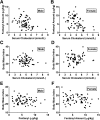Cholesterol level influences opioid signaling in cell models and analgesia in mice and humans
- PMID: 22377533
- PMCID: PMC3351822
- DOI: 10.1194/jlr.M024455
Cholesterol level influences opioid signaling in cell models and analgesia in mice and humans
Abstract
Cholesterol regulates the signaling of µ-opioid receptor in cell models, but it has not been demonstrated in mice or humans. Whether cholesterol regulates the signaling by mechanisms other than supporting the entirety of lipid raft microdomains is still unknown. By modulating cholesterol-enriched lipid raft microdomains and/or total cellular cholesterol contents in human embryonic kidney cells stably expressing µ-opioid receptor, we concluded that cholesterol stabilized opioid signaling both by supporting the lipid raft's entirety and by facilitating G protein coupling. Similar phenomena were observed in the primary rat hippocampal neurons. In addition, reducing the brain cholesterol level with simvastatin impaired the analgesic effect of opioids in mice, whereas the opioid analgesic effect was enhanced in mice fed a high-cholesterol diet. Furthermore, when the records of patients were analyzed, an inverse correlation between cholesterol levels and fentanyl doses used for anesthesia was identified, which suggested the mechanisms above could also be applicable to humans. Our results identified the interaction between opioids and cholesterol, which should be considered in clinics as a probable route for drug-drug interaction. Our studies also suggested that a low cholesterol level could lead to clinical issues, such as the observed impairment in opioid functions.
Figures







Similar articles
-
Clinical opioids differentially induce co-internalization of μ- and δ-opioid receptors.Mol Pain. 2018 Jan-Dec;14:1744806918769492. doi: 10.1177/1744806918769492. Epub 2018 Mar 27. Mol Pain. 2018. PMID: 29587571 Free PMC article.
-
Agonist treatment did not affect association of mu opioid receptors with lipid rafts and cholesterol reduction had opposite effects on the receptor-mediated signaling in rat brain and CHO cells.Brain Res. 2007 Dec 12;1184:46-56. doi: 10.1016/j.brainres.2007.09.096. Epub 2007 Oct 12. Brain Res. 2007. PMID: 17980352 Free PMC article.
-
μ-Opioid receptors in primary sensory neurons are involved in supraspinal opioid analgesia.Brain Res. 2020 Feb 15;1729:146623. doi: 10.1016/j.brainres.2019.146623. Epub 2019 Dec 24. Brain Res. 2020. PMID: 31881186 Free PMC article.
-
PTI-609: a novel analgesic that binds filamin A to control opioid signaling.Recent Pat CNS Drug Discov. 2010 Nov;5(3):210-20. doi: 10.2174/157488910793362386. Recent Pat CNS Drug Discov. 2010. PMID: 20726836 Review.
-
[Development of opioid tolerance -- molecular mechanisms and clinical consequences].Anasthesiol Intensivmed Notfallmed Schmerzther. 2003 Jan;38(1):14-26. doi: 10.1055/s-2003-36558. Anasthesiol Intensivmed Notfallmed Schmerzther. 2003. PMID: 12522725 Review. German.
Cited by
-
Is hyperlipidemia a potential protective factor against intraoperative awareness in cardiac surgery?J Cardiothorac Surg. 2016 Apr 12;11(1):60. doi: 10.1186/s13019-016-0454-7. J Cardiothorac Surg. 2016. PMID: 27068284 Free PMC article. Review.
-
Regulation of Pannexin 1 Surface Expression by Extracellular ATP: Potential Implications for Nervous System Function in Health and Disease.Front Cell Neurosci. 2017 Aug 8;11:230. doi: 10.3389/fncel.2017.00230. eCollection 2017. Front Cell Neurosci. 2017. PMID: 28848396 Free PMC article.
-
Ptchd1 mediates opioid tolerance via cholesterol-dependent effects on μ-opioid receptor trafficking.Nat Neurosci. 2022 Sep;25(9):1179-1190. doi: 10.1038/s41593-022-01135-0. Epub 2022 Aug 18. Nat Neurosci. 2022. PMID: 35982154 Free PMC article.
-
Association between perioperative cholesterol level and analgesia after video-assisted thoracoscopic surgery.Korean J Anesthesiol. 2019 Apr;72(2):135-142. doi: 10.4097/kja.d.18.00122. Epub 2018 Jul 4. Korean J Anesthesiol. 2019. PMID: 29969888 Free PMC article.
-
Lipid rafts as viral entry routes and immune platforms: A double-edged sword in SARS-CoV-2 infection?Biochim Biophys Acta Mol Cell Biol Lipids. 2022 Jun;1867(6):159140. doi: 10.1016/j.bbalip.2022.159140. Epub 2022 Mar 4. Biochim Biophys Acta Mol Cell Biol Lipids. 2022. PMID: 35248801 Free PMC article. Review.
References
-
- Chini B., Parenti M. 2004. G-protein coupled receptors in lipid rafts and caveolae: how, when and why do they go there? J. Mol. Endocrinol. 32: 325–338 - PubMed
-
- Helms J. B., Zurzolo C. 2004. Lipids as targeting signals: lipid rafts and intracellular trafficking. Traffic. 5: 247–254 - PubMed
-
- Ostrom R. S., Gregorian C., Drenan R. M., Xiang Y., Regan J. W., Insel P. A. 2001. Receptor number and caveolar co-localization determine receptor coupling efficiency to adenylyl cyclase. J. Biol. Chem. 276: 42063–42069 - PubMed
-
- Navratil A. M., Bliss S. P., Berghorn K. A., Haughian J. M., Farmerie T. A., Graham J. K., Clay C. M., Roberson M. S. 2003. Constitutive localization of the gonadotropin-releasing hormone (GnRH) receptor to low density membrane microdomains is necessary for GnRH signaling to ERK. J. Biol. Chem. 278: 31593–31602 - PubMed
Publication types
MeSH terms
Substances
Grants and funding
LinkOut - more resources
Full Text Sources
Medical

